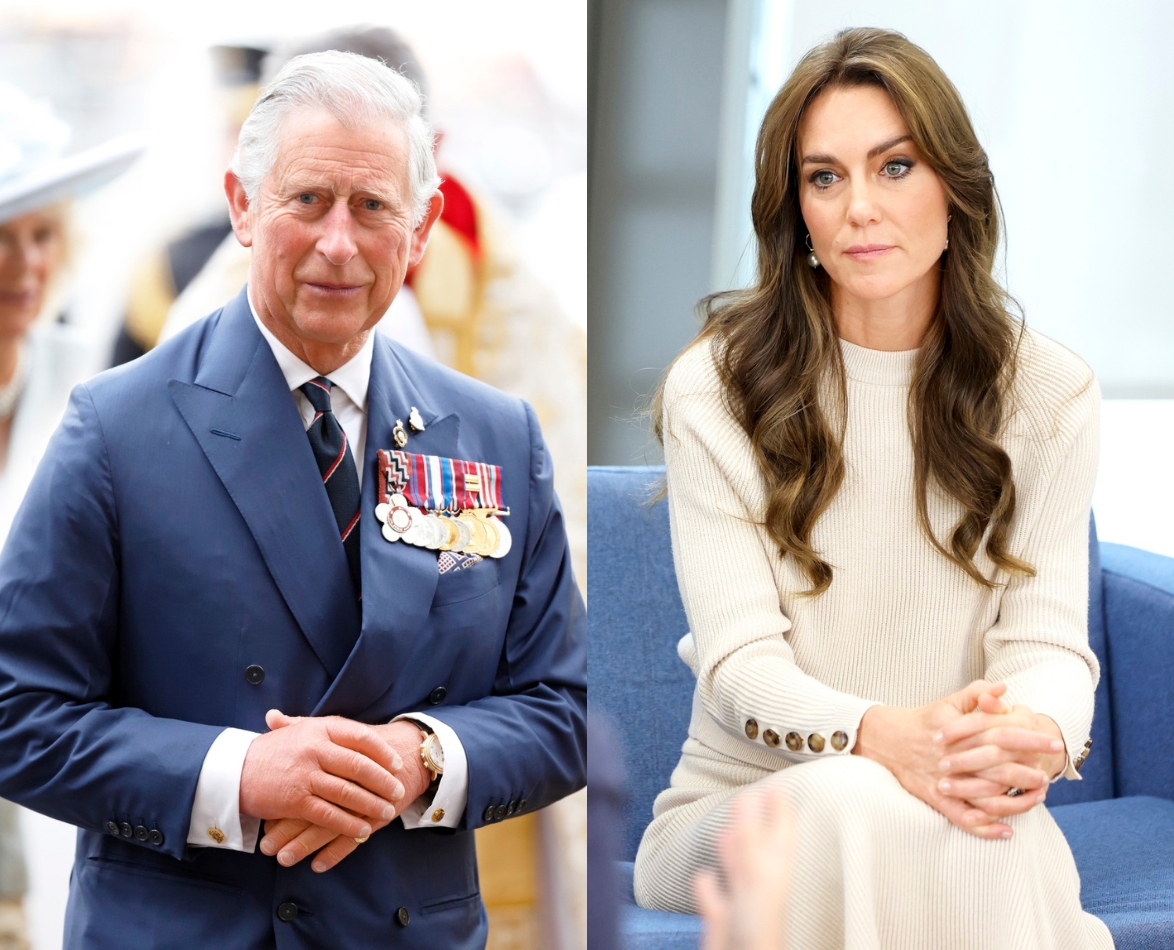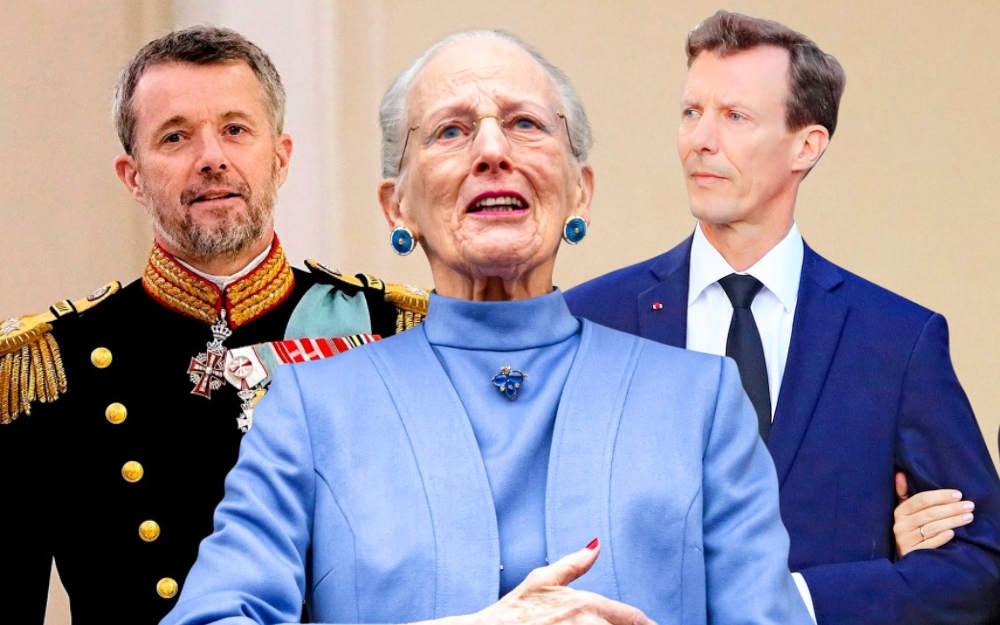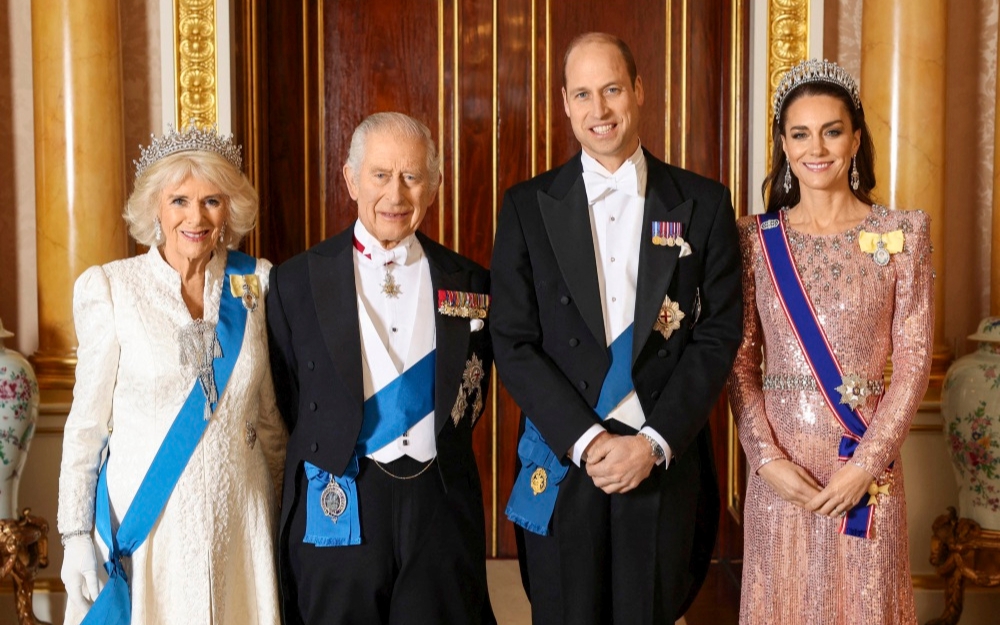The health crises that have rocked the royal family over the past couple of weeks have hammered home the fact that despite their privilege and wealth, they are also vulnerable to things going wrong.
And the shock news that both the King and the Princess of Wales have needed surgery for medical issues has also raised concerns about the wisdom of having a slimmed-down monarchy.
With the sovereign and the most popular royal out of action – along with Kate’s husband Prince William, who has stepped back from official duties to help care for her and their three children – the UK’s first family has been seriously depleted.
While the King, 75, is only expected to be laid low for a short time by the procedure he’s had for an enlarged prostate, the abdominal surgery Kate, 42, has undergone is clearly more serious. It is due to keep her in hospital for up to two weeks and she’s unlikely to return to work until after Easter – almost three months away.
Normally William, 41, would have been able to cover for his father and his wife, but he’s decided to prioritise Kate’s welfare, and to be on hand for Prince George, 10, Princess Charlotte, eight, and Prince Louis, five, while their mum is recovering.
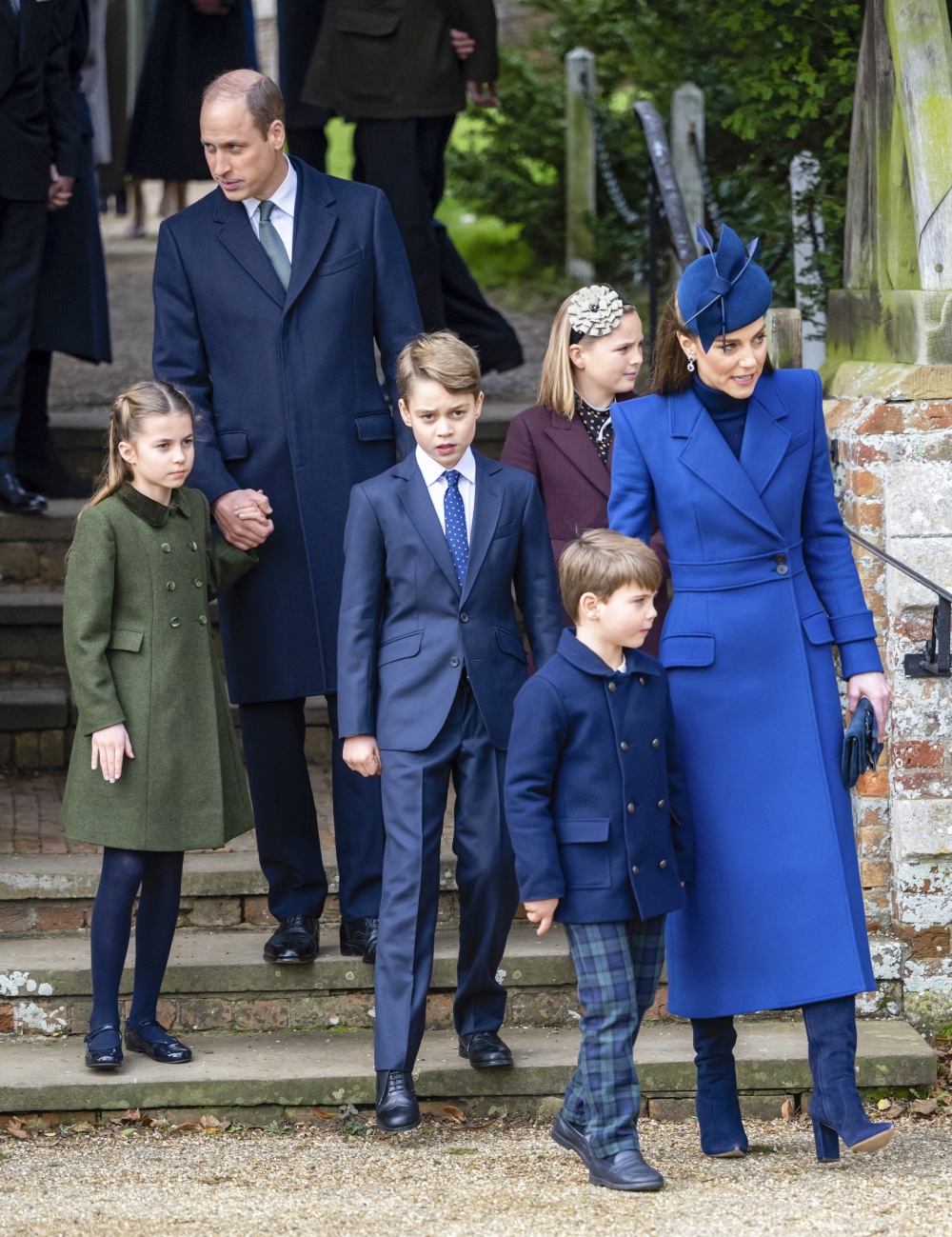
The next time the Wales family will be seen all together again is after Easter.
Royal experts say having three senior members of the family absent from the public stage at the same time is alarming and should be forcing courtiers to investigate the ability of the House of Windsor to function properly when it is hit by unforeseen setbacks like this. Royal writer Richard Kay says the current health blows have exposed the consequences of having a monarchy that essentially operates with a skeleton staff.
“Shorn of dependable figures, even for a short time, they reveal just how empty the royal cupboard is,” he points out. “For decades the royals glided serenely through many a difficulty because there were enough of them to deploy. If one family member was indisposed, another would seamlessly step in.
“But the turbulence of recent years, from Megxit to Prince Andrew’s Epstein crisis and the death of Queen Elizabeth, has put resources under the heaviest of strains.”
Apart from the King, William and Kate, the main working royals are Queen Camilla, 76, Princess Anne, 73, Prince Edward, 59, and Sophie Duchess of Edinburgh, 58. The Duke of Kent, 88, his sister Princess Alexandra, 87, the Duke of Gloucester, 79, and the Duchess of Gloucester, 77, also carry out official engagements on behalf of the Monarch but are slowing down because of their ages.
Charles has long believed that to be seen as value for money, rather than a drain on taxpayers, and to survive long-term, the royal family needs to be scaled back to just the Monarch and the immediate successors.
But when the King was planning to pare down The Firm, he didn’t take into account the fact that his son Prince Harry, 39, and daughter-in-law Meghan, Duchess of Sussex, 42, would walk away from their roles, or that his disgraced brother Prince Andrew, 63, would have to be relieved of his official duties.
A shortage of “staff” has rung alarm bells for his sister Anne. In an interview 10 months ago, she was asked about her brother’s plans to reduce the royal workforce and replied, “I think ‘slimmed down’ was said in a day when there were a few more people around. It doesn’t sound like a good idea.”
It’s unlikely courtiers anticipated having three key people off sick or caring for others at once, and they need to plan for this possibility in the future, says Richard. “It’s fortunate that these medical bombshells have come at a time when royal duties are traditionally lighter. Imagine if the alarm had occurred midway through a state visit when the King, and also William and Kate, would have been playing central roles.”

Out of action: Worried William is putting his family’s needs first.
The news came completely out of the blue. There had been no clues that Kate had been unwell when Kensington Palace announced on January 17 that she was in The London Clinic recovering from planned abdominal surgery that had been carried out the day before.
“The surgery was successful and it is expected that she will remain in hospital for 10 to 14 days, before returning home to continue her recovery,” read the statement. “Based on current medical advice, she’s unlikely to return to public duties until after Easter.”
Kate appreciated there would be interest in her health issues, but didn’t want to give a reason for the operation. “She hopes the public will understand her desire to maintain as much normality for her children as possible and her wish that her personal medical information remains private.”
Kensington Palace went on to say it would only provide updates on her progress when there is significant new information to share. It’s understood her condition is not cancer-related.
The shock announcement left royal watchers and the public reeling, and then 90 minutes later Buckingham Palace dropped another bombshell when it revealed the King also needed medical treatment. He had just been diagnosed with an enlarged prostate – an ailment that affects many men as they age.
“His Majesty’s condition is benign and he will attend hospital next week for a corrective procedure,” said the statement, adding that his public engagements would be postponed for a short period of recuperation.
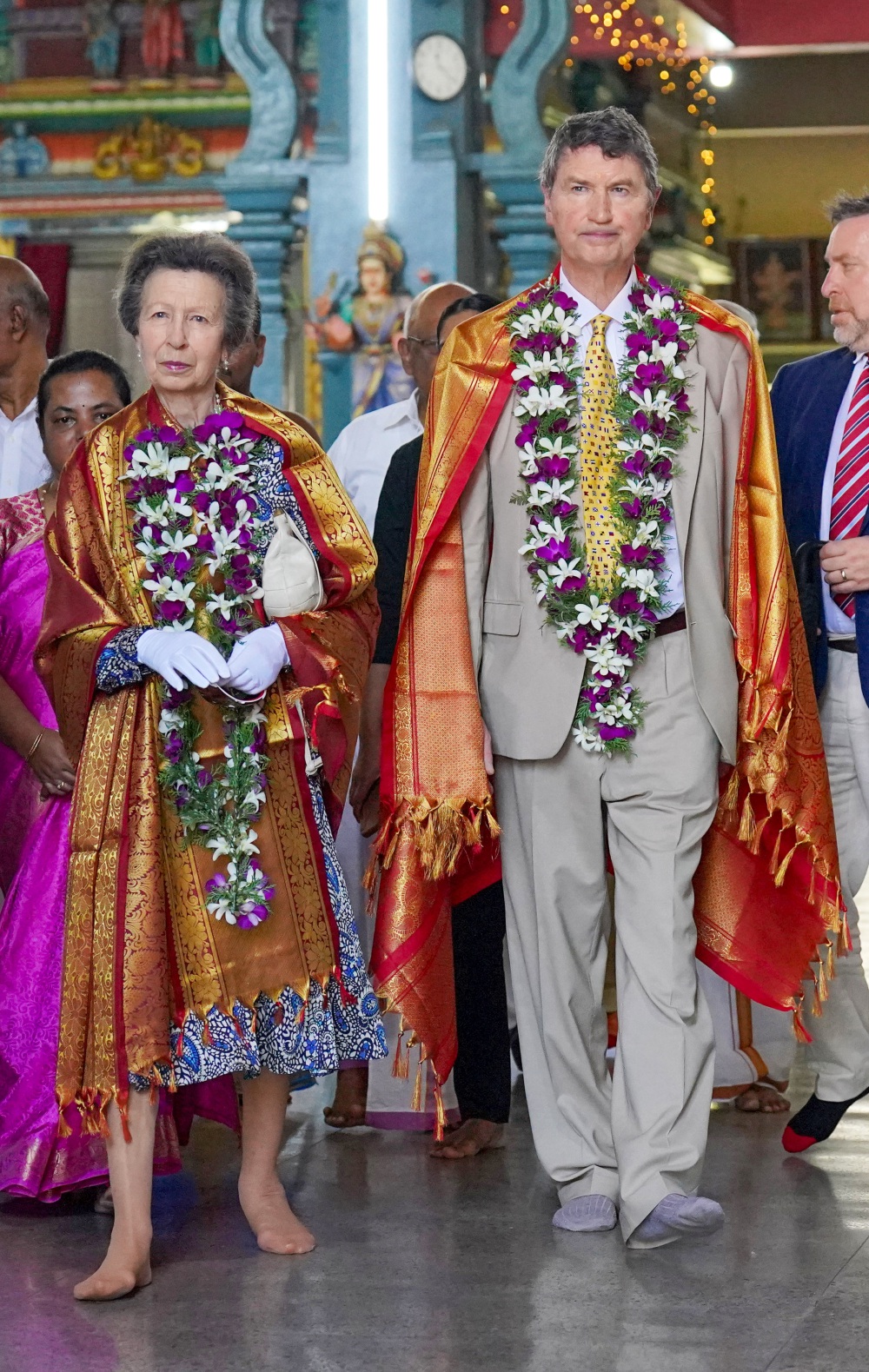
“I told you so!” Anne and husband Tim Laurence are picking up the slack.
It’s understood Charles was keen to share his diagnosis to encourage other men who might be experiencing symptoms to get checked.
One of the good things to come out of the King and Kate’s health issues is the royal family’s decision to be open about the fact they have been receiving treatment, says royal writer Robert Jobson. Releasing the statements was
a “ground-breaking departure from the bad old ‘no comment’ days and the long-standing royal tradition of privacy,” he points out.
Letting royal correspondents know Kate’s condition was not cancerous was a smart move because it prevented wild speculation and stopped the public from worrying unduly, he says.
“It marked, in my view, a significant and refreshing shift in approach regarding health and the royals. It was part of a grown-up, sensible nod to modernity and a positive PR strategy.”
In Charles’ case, being open about his prostate issues is important when it comes to talking about a health problem that is often considered taboo, and will encourage others to seek medical care, Robert says. While an enlarged prostate is very common, especially in older men, it should be checked out because the symptoms can be similar to those of prostate cancer.
“By sharing his condition, His Majesty will help to save lives and should be lauded for it,” says Robert, author of Our King: Charles III.
In fact, the day the announcement was made, the National Health Service website’s prostate enlargement page received 11 times more visits than the day before.
Robert says the strategy of transparency aligns with a “more modern, democratic approach to the monarchy, acknowledging the public’s right to be informed given his importance as head of state.”
In the past, even the slightest ailment in a royal family member was “shrouded in secrecy, fuelling way-off-the-mark rumours. This often occurred whenever Queen Elizabeth II and Prince Philip were admitted to hospital.
“Let’s hope his gesture of openness ushers in a refreshing change in the often inscrutable world of royal affairs.”
Duchess in distress

Just days after the news broke about the King and Kate, it was revealed that another royal has received a shattering health diagnosis. Sarah, Duchess of York, has malignant melanoma, which has been found just months after she went through breast cancer treatment.
A spokesperson for Prince Andrew’s ex-wife says the skin cancer was picked up shortly before Christmas when Fergie, 64, was having surgery.
“Her dermatologist asked that several moles were removed and analysed at the same time as the duchess was undergoing reconstructive surgery following her mastectomy, and one of these has been identified as cancerous. She is undergoing further investigations to ensure this has been caught in the early stages.
“Another diagnosis so soon after treatment for breast cancer has been distressing, but the duchess remains in good spirits.”
The spokesperson adds, “The duchess wants to thank the entire medical team that has supported her, particularly the dermatologist whose vigilance ensured the illness was detected when it was. She believes her experience underlines the importance of checking the size, shape, colour, texture and emergence of new moles that can be a sign of melanoma.”
In an appearance on a TV show in November, mum-of two Fergie revealed that following her breast cancer diagnosis, she was scared of getting the disease somewhere else and would often wake up at night in a panic.
“You start the four in the morning syndrome,” she said on Loose Women. “You know that moment when you suddenly wake up and go, ‘Oh, I’m sure I’ve got cancer somewhere else… I’m going to go and ring my doctor.’ I’m getting over that but it’s only been a few months since my operation.”
